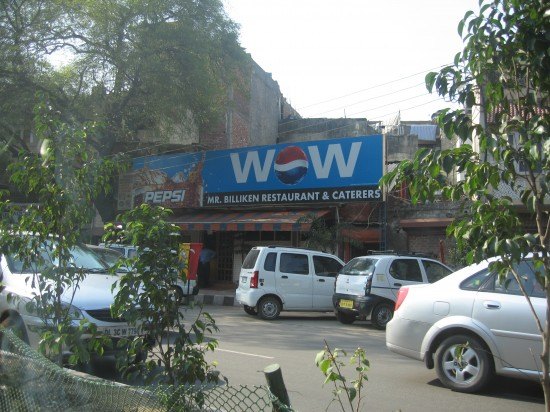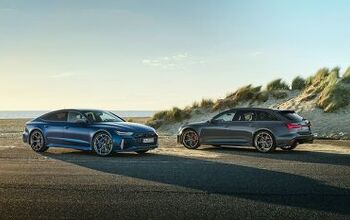Driving Indian Cars On Their Home Soil: My Adventure With The Tata Indigo
I believe that it was over text message, three years ago, that my then-girlfriend proposed we take a month-long trip to India together. To a Westerner, life on the Indian subcontinent is a feast for the senses, rife with sights, smells, sounds, and tastes that bear no comparison prior to visiting. For her, the trip would be something of an opportunity to clear our heads and devote attention to a relationship that was based on spontaneity and excitement, as well as to take in the redolence and beauty of Indian culture.
For me, however, it was much simpler. Fresh into my career as an automotive journalist, it would, naturally, be all about the cars.
That’s how, some weeks later, I found myself standing groggily in the lobby of Hotel Perfect, a derelict travelers’ outpost in the New Delhi neighborhood of Karol Bagh, with nothing more than a backpacker’s rucksack and a marsupial-style pouch for my passport and wallet. My travel companion and I had neither an itinerary nor a clue, so I consulted the front desk manager, who stood at the counter reading a newspaper and sipping chai, as to where to hire a car for the journey. With nary a reciprocal glance, he pointed to the travel agency catercorner to the motel entrance. Our options limited, we walked over.
By the travel protocol to which I had become accustomed, the mountebanks who staffed these travel agencies were nothing but swindlers who would take my money and leave me stranded on the side of the road. But, perhaps swayed by my bright-eyed travel companion, within a matter of minutes and a depleting swipe of a credit card, we had booked a 19-night tour of India – complete with a car and driver.
I was salivating at the possibilities of cars. Driving in India is a task best left to the local talent, a harrowing game for which the only rule is that there are no rules. I was prepared to budge on the issue of being a passenger, and not a driver, for a journey of approximately 3,000 miles, but there was no way I was going to be seen in India’s equivalent of the Chevrolet Captiva Sport rental car special. Would it be a Hindustan Ambassador, India’s ubiquitous and virtually indestructible equivalent to the Ford Crown Victoria? A locally produced Maruti (Suzuki) Swift DZire, or one of its cheap and cheerful ilk?
After signing the papers, we stepped outside and the driver pulled around in a white, late-model Tata Indigo. About 10 inches shorter than a Honda Civic, the Indigo is a sibling of the bestselling Indica hatchback, and resembles the first-generation Dacia Logan. This particular Indigo was powered by a turbodiesel four-cylinder, mated to a five-speed manual transmission, and outfitted with manual door locks, crank windows, and seatbelts. Its odometer read at least six digits (in kilometers). The travel agent and driver assured us that the air conditioning blew ice-cold, but that we would hardly need it during the dry winter months in the north of India. With a model designation more befitting an exotic dancer than basic transportation, my hopes were high for an enjoyable ride.
As my girlfriend looked worryingly at our mode of transportation for the next three weeks, I was grinning from ear to ear. Finally, I had found a way to experience life in India as Indians do, along a trek that would humble Jack Kerouac and inspire a generation of my peers who lack the most basic of driving privileges. I knew no expressions to describe the controlled chaos on the city streets, where local apartment-dwellers associate with vagabond tourists in a Dickensian portrayal of life in the 21st century. Pedestrians walk in the streets due to crumbling sidewalks, children scamper across the road without signal or warning, and the elderly move slowly, if at all, toward their destination.
The sweltering competition of cars, motorcycles, and rickshaws was but one aspect of a culture that is constantly on the move. And by the time we set off for the overnight drive to Varanasi, a pilgrimage city 500 miles due southeast, I knew I had to have a turn behind the wheel in India.
The thousands of miles that followed proved a cautionary guide to life on the local roads, replete with the hindsight knowledge that would intimidate even some adventurous travelers. Honk when passing, each and every time, to let fellow drivers know of your presence. Pass on whichever side affords the most space. A strong horn is as important as strong brakes. The bigger vehicle always has the right of way. Driving long distances at night is highly ill-advised. There are no cupholders in the Tata Indigo. Roadside chai does not sit well in one’s lap along unpaved roads in the wilds of Utter Pradesh. Even if a rickshaw honks and its driver screams and flails his arms, the truck has the right of way. And an overturned truck facing the wrong direction at the beginning of a rocky, mountainous pass signals trouble ahead.
As we reached the Taj Mahal at the end of the second week, I attempted a pitch letter to all of India’s public relations professionals that billowed with curiosity and likely gave away my position as a newly minted freelancer. I pressed “send,” and the waiting game began, as I was traveling without regular access to a phone, e-mail, or a computer.
After three soul-crushing days of not receiving any correspondence, we were in Bikaner, on the edge of not far from India’s western border with Pakistan. I sat down at the motel computer for a look. I had a bite. A major Indian automaker was ready to invite me to its factory near Mumbai – about 750 miles south of Agra – “for test drives of some of our cars in our Pune plant along with a plant visit” a week later.
I dropped everything and made the necessary arrangements. We were going. I was going to be the journalist who drove the cars of India and lived to tell the tale.
We bid farewell to the driver and caught a direct train that would bring us much closer to the destination. The 27 hours by train from Bikaner to Mumbai were lost in heat, sweat and unnerved sense of self. It wasn’t hot on the train at all – neither from the moment I boarded nor throughout the journey. As the train passed from the northwestern desert country through to India’s busiest metropolis, it was actually rather cool. Maybe it had something to do with the breeze that came in through the side windows. Perhaps it was the eight cups of chai that were purchased and consumed along the journey that settled the equilibrium and restored some sanity. India’s railway network is a triumph that makes America’s accomplishments in the field look childish.
Somewhere along the way, at one of the train’s 20 stops, my girlfriend’s Blackberry gained service. The sight of an email from the PR folks augured positive feelings – until I read it. My visit to the factory, toward which I was inching closer every minute, would be stymied by other, visiting journalists. As quickly as the buildup to my visit had occurred, the dream had swiftly ended. We arrived in Mumbai, a city teeming with the movement of humans, animals, goods, and ideas, and quickly departed, once more, to conclude our trip in the southern beach area of Goa.
I never had the chance to drive the pride of India’s domestic auto manufacturers, or write the story that would boost my fledgling career. But years later, the trip to India still stands out as the benchmark against which all subsequent trips were measured. And none of them quite stacked up.
Perhaps it’s because they lacked a Tata Indigo.
More by Jeff Jablansky
Latest Car Reviews
Read moreLatest Product Reviews
Read moreRecent Comments
- Fred This is one car I never see anymore. Where did they all go?
- Daniel Bridger The increased cost of electricity is raging faster than the government's manipulation of ICE fuel.
- Zipper69 Why the choice of a four door shell.Packing this tech into Stinger would have been awesome.
- Eric I have no desire to have an EV. Too expensive, no charging facilities within 50 miles are even planned, unproven technology, arguably even more environmentally harmful than ICE vehicles. Besides being a status symbol and to signal virtue, what's to like?
- Zipper69 Alfa Romeo Europa

































Comments
Join the conversation
I rented motorcycles a couple times in Kathmandu. It was pretty fun and not as scary as you might think. Maybe because riding a bike you already think everyone is trying to hit you.
A picture of the car would have been nice, let alone some of the Indian scenery.